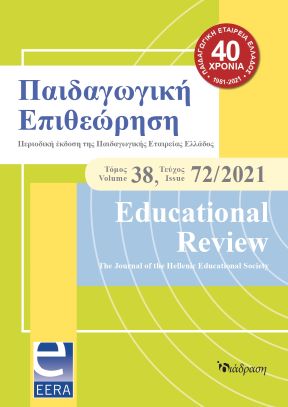Στοιχεία διαπροσωπικής επικοινωνίας στον Ερωτόκριτο του Βιτσέντζου Κορνάρο
Main Article Content
Περίληψη
This paper studies verbal and non-verbal communication as this is captured in part A of the narrative poem Erotokritos by Vitsentzos Kornaros which is considered one of best of its age. First, the paper presents the basic characteristics of the Cretan Renaissance that inspired the author. Then a brief reference is made to the genre of the masterpiece and its classification as a novel. Within the framework of this study, the focus was placed on investigating the content of the verbal communication, as this is identified in the dialogues taking place between the main characters-protagonists of the romance. Moreover, the discussions between Erotokritos and his trusted friend Polidoros as well as between Aretusa and her nurse Frosini are also studied. The verbal communication helps understand the characters’ way of thinking and leads to conclusions about social perceptions and public morality concerning love, which is prevalent in the poem. Finally, reference is made to important non-verbal communication channels contained in the text. More specifically, important references to the visual, motor, thermal and tactile communication channel have been identified. The study shows that non-verbal signs express feelings, which are difficult to express in words. As these signs contribute to the plot, they describe the interaction between the protagonistsand disclose their feelings in every scene of the play.
